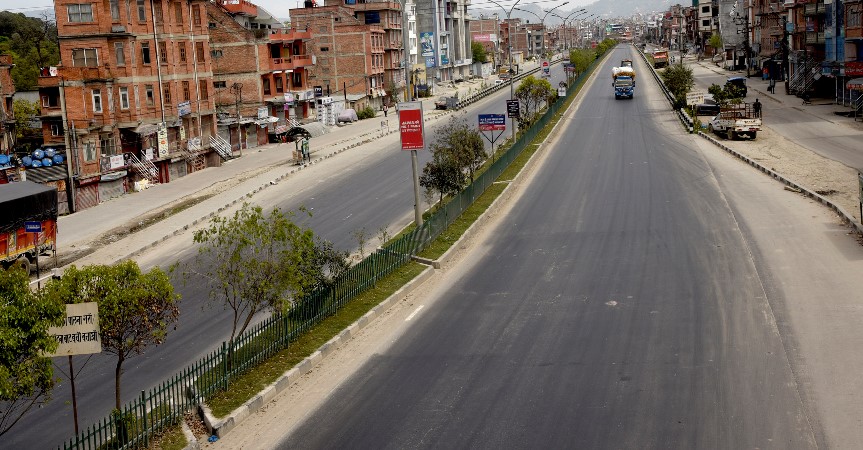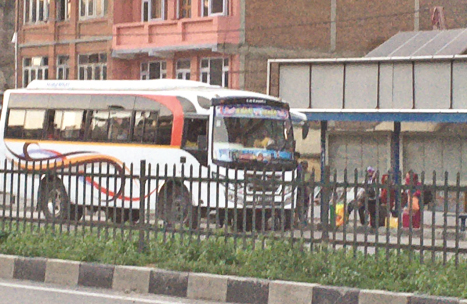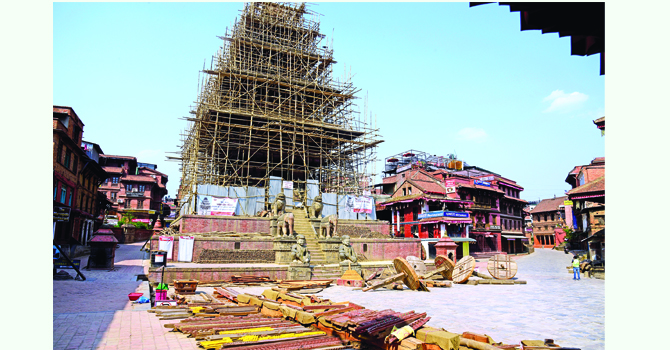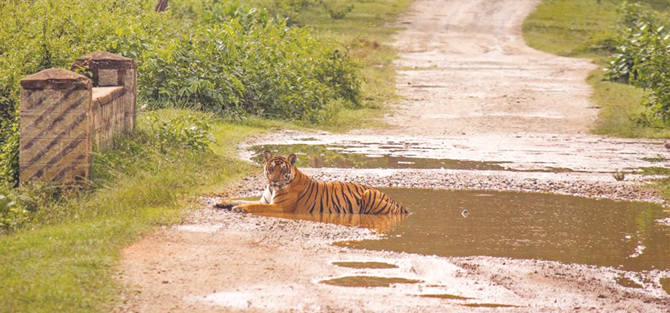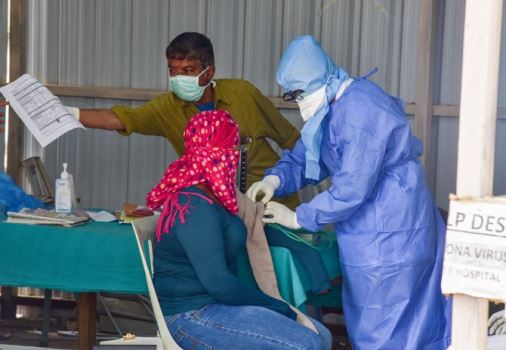Waste burning puts human health at risk
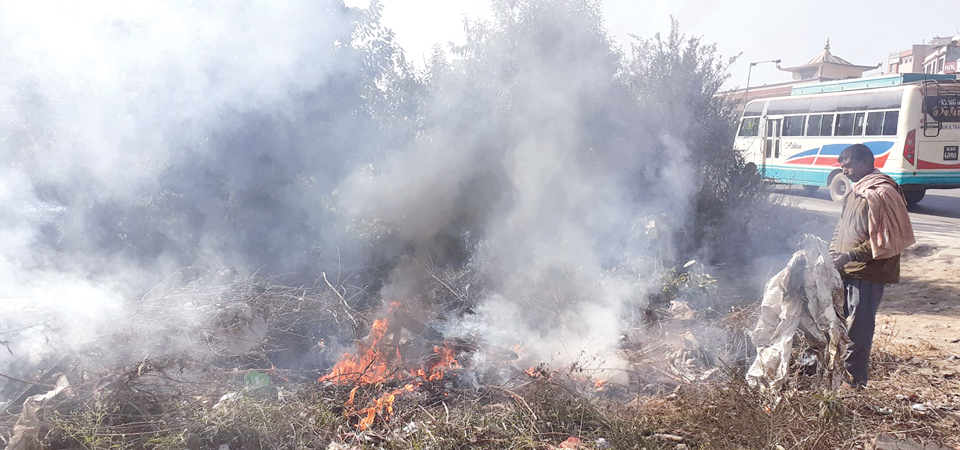
By Indira Aryal
Kathmandu, Dec. 22: On Monday morning, a group of young people huddled around the burning waste nearby Koteshwor and gossiped to fend off extreme cold.
With the peak of winter, the scenario is similar in almost every chowk, open space and on the river banks where most homeless people stay. But experts warn waste burning entails numerous health problems.
Burning waste is a significant source of dangerous chemicals like dioxins, furans, and black carbon, which is found most dangerous to human health, experts said. This is also a short-lived climate pollutant that contributes to climate change, they say.
Out of the total waste generated in the Valley, only 72 per cent is collected while nine per cent is burnt openly.
About 50 per cent of the waste from municipalities in the Kathmandu valley is generated by households, 43 per cent from commercials, six per cent from institutions, and just one per cent from parks and gardens, street sweeping, and neighbouring villages. Large quantities of uncollected waste can be found along the banks of urban waterways such as Bagmati and Bishnumati Rivers, said environmentalist Bhupendra Das, who is a researcher at IASS, Potsdam and Tribhuvan University.
According to the Air Quality Life Index Annual Update report, Nepal, Bangladesh, India and Pakistan account for nearly a quarter of the global population and consistently rank among the top five most polluted countries in the world. As a result, South Asia accounts for 60 per cent of the person-years that are expected to be lost globally due to pollution levels exceeding the WHO guidelines. Average life expectancy across these four countries would be 5.6 years higher if pollution concentrations complied with the WHO guidelines.
Across the world, various methods and technologies have been adopted to convert waste into energy, but in Nepal, none of the concerned authorities are found working in this direction, Das complained. “We must identify which technique suits best to minimise the practice of burning waste in the valley,” he added.
Dr. Neeraj Bum, Associate Professor at the Pulmonology and Critical Care Medicine at TU Teaching Hospital, said that air pollution in the Kathmandu Valley is 25 times higher than WHO standards and air pollution caused by waste burning is 100 times higher. “Many areas in the Valley, mostly on the banks of the River, are full of open burning with the onset of winter, which is the main source of air pollution. Carbon dioxide is a major gas emitted by trash burning,” he added.
Dr. Bum said that air produced from burning plastics and other waste could cause asthma, COPD, heart disease, pneumonia, bronchitis, conjunctivitis and lung cancer. He also said that public awareness was essential to stop such practices.
About 10 per cent of mercury emissions come from open burning, as well as 40 per cent of polycyclic aromatic hydrocarbons (PAHs). Such pollution can cause lung and neurological diseases and has been linked with heart diseases and some cancers, Dr. Bum informed.
Burning waste produces air emissions, including carbon monoxide (CO), carbon dioxide (CO2), and nitrogen oxides (NOx). Smaller amounts of more poisonous chemicals are commonly detected in smoke like benzene, styrene, and heavy metals such as lead, mercury, and arsenic. These gases cause environmental pollution and fuel global warming, he said.
We have very poor management techniques to minimise the waste. More than 80 per cent of the waste is dumped at landfill sites and out of it 3 per cent is burnt, Das added. According to WHO, air pollution kills an estimated seven million people worldwide every year. WHO data show that nine out of 10 people breathe air containing high levels of pollutants.
According to the Information Officer at the Department of Environment Saroja Adhikari, a team from the department has been monitoring various parts of the Valley to control the open burning.
“We will only monitor and report to the Ministry of Forest and Environment. We are not an institution that takes action. It is a lengthy process because at the time we submit a report, the people who are involved in the burning will disappear from the site, so it is not easy to take action, we just warn them on the spot,” she said.
The department is now planning to reach out to workshop operators to monitor the open burning. “At least they will stay there and they can be corrected by the Ministry if they are found guilt,” she said.
Recent News

Do not make expressions casting dout on election: EC
14 Apr, 2022
CM Bhatta says may New Year 2079 BS inspire positive thinking
14 Apr, 2022
Three new cases, 44 recoveries in 24 hours
14 Apr, 2022
689 climbers of 84 teams so far acquire permits for climbing various peaks this spring season
14 Apr, 2022
How the rising cost of living crisis is impacting Nepal
14 Apr, 2022
US military confirms an interstellar meteor collided with Earth
14 Apr, 2022
Valneva Covid vaccine approved for use in UK
14 Apr, 2022
Chair Prachanda highlights need of unity among Maoist, Communist forces
14 Apr, 2022
Ranbir Kapoor and Alia Bhatt: Bollywood toasts star couple on wedding
14 Apr, 2022
President Bhandari confers decorations (Photo Feature)
14 Apr, 2022





